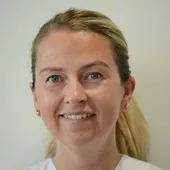Introduction
Many factors can be related to apical root resoption and roundening, ranging from orthodontic movement to oclusal trauma. In severe cases the tooth can even become mobile. In normal situations, a fractured tooth above the gingival margin can be restored with convertional dentistry with the use of intra radicular post and prosthetic crown. However, in cases where the root length is no longer optimal to be used as retentive element for an intra radicular post, alternative options must be planned, which can go from removable partial prosthesis, a fixed three-unit bridge or dental implants.
One of the main benefits of an implant that is placed and provisionalized immediately, it’s the potential in aesthetic outcome preserving the existing bone morphology and gingival architecture. To enable this type of treatment, adequate primary stability is a prerequisite and the choice of implant design is directly linked to the expected outcome. Straumann® BLX implants combine all properties to match the all clinical situations from the surgical to the restorative perspective.
Initial situation
A 53-year-old female patient presented to the office with a fractured left central incisor tooth which had been repeatedly bonded to a ceramic crown (Figs. 1,2). After anamneses and examination it’s recorded good systemic and oral health condition with well balanced occlusion and no smoking habits. Cone-Beam Computed Tomography (CBCT) and peri-apical x-ray showed external root resorption with very small insertion in the alveolar bone not allowing adequate conventional intra radicular post (Figs. 3,4). Considering the fractured tooth was in a esthetic zone, the patient requested to be restored in the safest and fastest way possible.
Treatment planning
Given the clinical and radiographic situation with the position of the root towards the buccal wall and sufficient apical bone, extraction followed by immediate implant placement and immediate restoration was chosen as the treatment option with the placement of a Straumann® BLX Roxolid®, SLActive® ø4.0x14mm implant with immediate temporary abutment and chairside tooth shell pick up technique as provisional restoration.
Surgical Procedure
Intra sulcular incisions were performed to release the marginal gingival fibers to allow a minimaly invasive extraction. The socket was carefully cleaned to remove any ligament and debris left. Special attention was given to assess the alveolar walls integrity. A distance of 3mm was observed between the gingival margin and the buccal wall margin. Implant bed preparation considered a medium density bone workflow starting with the use of the Needle drill aiming to the palatal wall creating an entry point for the next drills with an osteotomy that allows for a greater area of implant engagement (Fig. 5). The Ø2.2mm pilot drill was used to the respective implant length planned followed by the use of alignment pin to check the tridimensional orientation (Figs. 6,7). The drills Ø2.8mm and Ø3.2mm were used to finalize the oteotomy (Fig. 8). The site was then properly probed to assess for possible wall perforation. A Straumann® BLX ø 4.0x14mm implant was placed starting with the Surgical Handle engaging the apical part of the implant following the same orientation of the Needle drill correcting the implant direction as it moves inside the osteotomy (Figs. 9,10). 45Ncm primary stability was achieved at the final position. After placement, the implant position was verified horizontally with occlusal mirror and vertically with the use of the surgical probe and at this moment the abutment gingival height was also selected (Figs. 11,12) A healing abutment was placed onto the implant (Fig. 13) to protect the connection so granular bone substitute (Xenoflex®) could be applied in the gap between the implant and buccal wall and gently compacted in with the 2.8mm side of the surgical probe (Figs. 14,15,16). collacone® was used to hold the bone granules distant from the gingival margins avoiding the possibility of soft tissue fenestration and protecting from fibroblastic infiltration (Figs. 17,18).
Prosthetic procedure
A Ø4mm with 2.5mm gingival height temporary abutment was placed onto the implant and it showed no crestal bone interference allowing for appropriate creation of emergence profile(Fig.19). The tooth shell that was designed and milled in PMMA prior to the procedure(Figs. 20,21) was tested to make sure the contours and retention wings were appropriate without interference (Fig. 22,23). The palatal side including a small portion of the incisal edge to allow screw channel access was opened (Figs. 24,25). The lateral wings of the tooth shell allow the provisional temporary crown to stay immobile during the pick up procedure, which is a common problem clinicians face when performing immediate pick-up technique.
The tooth shell was bonded to the temporary abutment with the use of flowable light-curing composite and a slim emergence profile was created to the subgingival portion using the same material (Fig. 26). At this moment the retention wings have been removed. With no compression to the soft tissue, the provisional crown was seated and the incisal edge adjusted to make sure the antagonist teeth was not touching it in excursive movements. The provisional crown was torqued to 25Ncm and the screw acess properly closed and polished (Fig. 27). The patient was again seen 7 days after for post operative and peri-apical radiographic control (Figs. 28, 29).
The final prosthesis was designed using Straumann CARES Visual with digital workflow. During the designing step it was possible to see that the screw acess would stay completely to the palatal side with no interference in the esthetics of the restoration. A monolithic ceramic (Zirconiam Prettau) crown with facial cutback and layering technique was milled and cemented extra orally to a RB/WB Variobase® with 1,5mm gingival height corresponding to the healing remodeling of the bone architecture (Fig. 30). The restoration was seated and screwed to a torque of 25Ncm after occlusion, contact points and excursive movements have been checked (Figs. 31,32,33).
Treatment outcome
The patient works as dental nurse herself in a dental practice and has direct interaction with many patients during her working shifts. For her it was extremely gratifying the fact she was able leave the dental chair knowing the compromised tooth had been extracted and the implant placed and restored immediately. The final crown matched the texture and shade of the adjacent teeth bringing harmony to the smile. The patient refers the final crown as “the cherry on the cake”.

